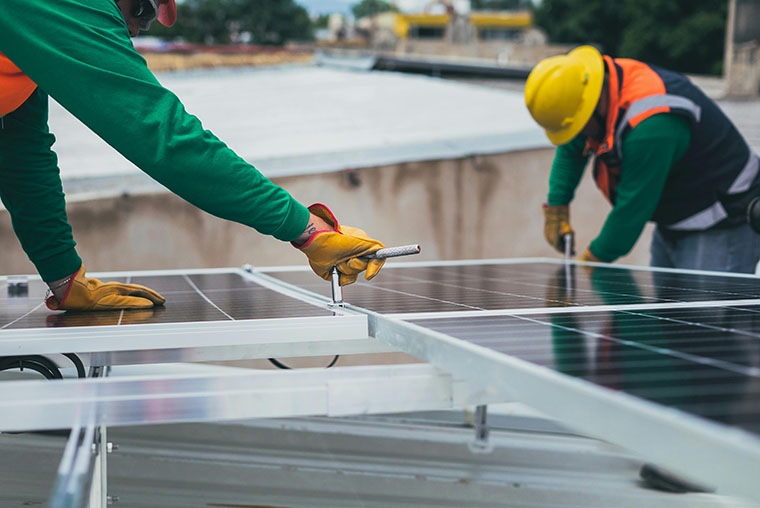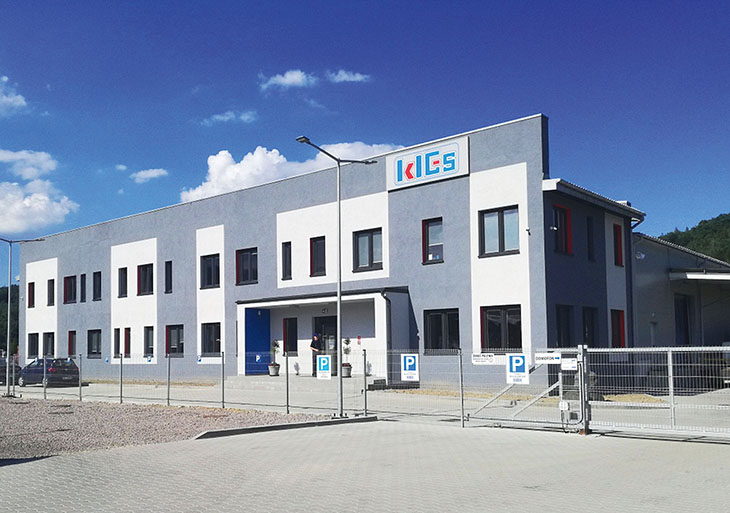Aluminium profiles have become a cornerstone of the photovoltaic industry, reshaping the way solar energy is captured and harnessed. In this article, we will delve deeper into the significance of aluminium profiles, their versatile applications, and the pivotal role they play in advancing the field of photovoltaics.
The advantages of aluminium profiles
One of the standout features of aluminium profiles is their exceptional durability and resistance to corrosion. This makes them particularly well-suited for outdoor installations where exposure to varying weather conditions is inevitable. Unlike some other materials, aluminium can withstand prolonged exposure to rain, snow, and UV radiation without deteriorating, ensuring the longevity of solar panel systems. This resilience translates into a lower maintenance burden and prolonged operational life for photovoltaic installations.
Lightweight and easy to install
The lightweight nature of aluminium profiles is a significant asset in the realm of solar energy. These profiles are easy to transport and handle, simplifying the installation process significantly. The reduced weight also translates into less structural stress on the mounting systems, making them ideal for both ground-mounted and rooftop solar panel installations. Furthermore, the ease of handling aluminium profiles means that installation crews can work efficiently, ultimately reducing labor costs associated with solar panel assembly.
Versatility in design
Aluminium's malleability is another hallmark feature that lends itself well to the demands of photovoltaics. Manufacturers can mold aluminium into custom profiles tailored to fit specific solar panel sizes and configurations. This versatility in design allows for precise integration of solar panels, ensuring an optimal fit for different applications, from residential rooftops to large-scale solar farms. The ability to adapt aluminium profiles to various solar panel types and layouts enhances the overall efficiency of photovoltaic systems.
Environmental sustainability
The use of aluminium profiles in photovoltaics aligns seamlessly with the principles of environmental sustainability. Aluminium is a highly recyclable material, and the recycling process requires significantly less energy compared to primary production. This reduces the carbon footprint of solar panel manufacturing and promotes a circular economy. By choosing aluminium profiles, the photovoltaic industry contributes to the reduction of greenhouse gas emissions and the conservation of valuable natural resources. To sum up, the production of aluminum profiles (https://extral.com/en) is beneficial for the environment.
Applications of aluminium profiles in photovoltaics
Aluminium profiles find diverse applications across various aspects of photovoltaics, demonstrating their versatility and adaptability within the industry. Let's delve into some of the key areas where these profiles are instrumental.
Solar panel frames
Aluminium profiles serve as the backbone for the creation of sturdy frames that house solar panels. These frames provide structural support and protect the delicate solar cells from external factors such as wind, snow loads, and mechanical impacts. The corrosion-resistant properties of aluminium ensure that these frames remain robust throughout their operational life, contributing to the overall reliability of solar panel systems.
Mounting systems
Efficient and secure mounting systems are essential for the proper functioning of solar panels. Aluminium profiles are integral components of these systems, offering flexibility in design and ease of installation. Whether solar panels are affixed to rooftops, ground-mounted arrays, or other surfaces, aluminium mounting systems provide the necessary stability and adjustability to maximize exposure to sunlight. Their lightweight nature also simplifies transportation and installation.
Tracking systems
For advanced photovoltaic setups seeking to optimize energy capture, tracking systems that follow the sun's path throughout the day are employed. Aluminium profiles play a pivotal role in these systems, facilitating precise movement and positioning of solar panels. The adaptability of aluminium profiles allows for the creation of tracking mechanisms that can efficiently follow the sun's trajectory, ensuring optimal energy generation throughout the day.
Wiring and cable management
Efficient wiring and cable management are paramount in photovoltaic installations to ensure safe and reliable electrical connections. Aluminium profiles are employed to organize and protect the wiring, mitigating the risk of electrical faults and damage. The use of these profiles enhances the overall safety and functionality of solar panel systems, particularly in large-scale installations where complex wiring networks are involved.
Heat dissipation
During operation, solar panels can generate heat, which, if not managed effectively, can reduce their efficiency and lifespan. Aluminium profiles with heat-dissipating properties are utilized to address this challenge. These profiles aid in dissipating excess heat generated by the solar panels, preventing overheating and maintaining their performance over time. Effective heat dissipation extends the operational life of solar panels and ensures consistent energy generation.
The future of aluminium profiles in photovoltaics
As the global shift towards renewable energy continues to gain momentum, the role of aluminium profiles in photovoltaics is poised to expand further. Ongoing research and development efforts aim to enhance the properties of aluminium profiles, making them even more efficient and sustainable. Innovations in materials and manufacturing processes are expected to lead to even lighter, stronger, and more environmentally friendly aluminium profiles, further driving the adoption of solar energy solutions worldwide.
Conclusion
Aluminium profiles have emerged as indispensable components in the photovoltaic industry, contributing to the efficiency, durability, and sustainability of solar panel systems. Their durability and corrosion resistance ensure the long-term viability of photovoltaic installations, while their lightweight and versatile design options simplify the installation process. Additionally, the environmentally sustainable nature of aluminium aligns perfectly with the goals of reducing carbon emissions and promoting clean energy sources.
In summary, aluminium profiles are integral to harnessing the power of the sun for clean energy production, and their continued development and adoption will play a pivotal role in shaping a greener and more sustainable future.























